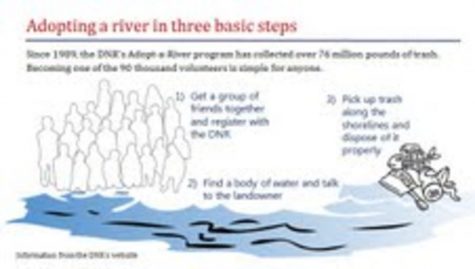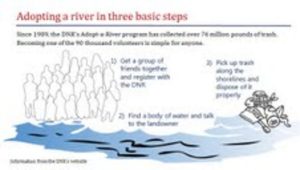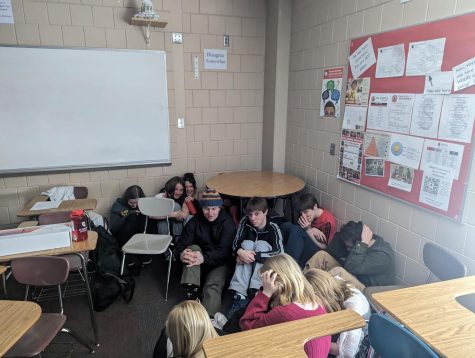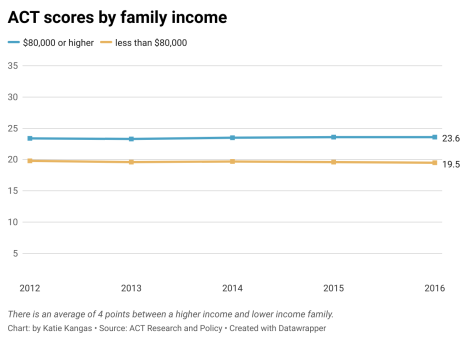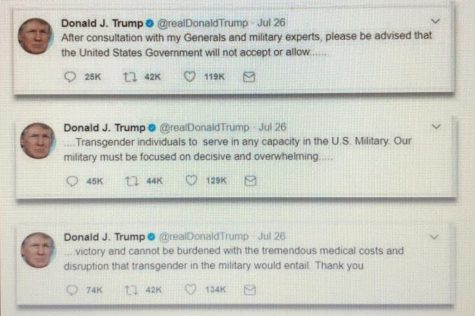Not your normal net, cleaning up ocean plastics
November 1, 2018
People may be surprised when hearing a 600 meter long net it set out to sea in order to collect clusters of plastic from the Great Pacific Garbage Patch. This patch is located between the coasts of California and Hawaii.
However, this so called “largest cleanup in history” may very well be the key to the survival of our planet. Chief operator of The Ocean Cleanup, Lonneke Holierhoek says, “I’m convinced our project does give hope, not false hope. We are solving a serious environmental problem with the cleanup. It also shows we do not have to give up.”
System 001, launched by The Ocean Cleanup on Sept. Eighth, has a goal to reduce 90 percent of plastic consumed in The Great Pacific Garbage patch by 2040. A new era is being born as this cleanup may solve the mystery of how to clean all plastic clumped in the ocean.
In general, this launch was set out in order to decrease the amount of plastic in the ocean. “We are in a big hurry,” Holierhoek said. “We really see the urgency to start the cleanup because there’s so much harm that could happen with this plastic that’s floating out there.”
The problem is that this operation needs to happen fast over the course of 20 years or so in order to reduce 90 percent of The Great Pacific Patch. This net is not going to do all the work. It will definitely benefit the health of the ocean, but we as human beings are in charge of keeping this planet healthy. As a society, disposing waste in proper bins such as trash and recycling is key. Not disposing of waste property, can lead to harm of marine animals because plastic can break down into even smaller particles making it extremely dangerous for the health of all living things in the ocean.
This cleanup is based upon a net system that is designed as a u-shaped tube and is 600 meters long with a 10 foot “skirt” or net hanging from it. This strategic design was made to surface the top of the ocean where most plastic lies. “We try and explain it like a leaf blower,” Holierhoek said. There is so much plastic lying in the ocean and particularly the patches. “For the future, we think we may need an even bigger size,” Holierhoek said.
Without this system, having to pick up all pieces of trash and plastic one-by-one is extremely time consuming. This cleanup system allows plastic to be collected in a more efficient and simpler way. The current size and efficiently of the tube-net system was perfect for the first launch of this cleanup. If humans do not do their role in society to dispose trash properly, a bigger net will be needed to perform the next cleanup because more plastic will be clustered in the ocean.
It’s better to think of the garbage patches as, flecks of pepper floating throughout a bowl of soup, rather than a skim of fat that accumulates (or sits) on the surface.
— National Ocean and Atmospheric Administration
It’s often reported The Great Pacific Garbage Patch is twice the size of Texas. There are five garbage patches in the ocean, The Great Pacific being the largest. These patches are described as “floating landfills”. The NOAA (National Ocean and Atmospheric Administration) cites “It’s better to think of the garbage patches as, flecks of pepper floating throughout a bowl of soup, rather than a skim of fat that accumulates (or sits) on the surface.”
It’s extremely scary to think a giant patch filled with plastic is floating in the middle of the ocean. It is bigger than one of the largest states in America and nothing in the ocean should be as big as that; especially something that is harmful to it. Imagine a sea turtle struggling to swim and survive while a plastic jug is wrapped around it in rope. No animal should ever have to suffer due to something that humans are causing. If humans do not contribute to reducing the size of The Great Pacific Garbage Patch and furthermore all five patches, it will take a toll on the effectiveness of how quickly we can get this job done.
The Great Pacific garbage patch is a major concern in the health of our ocean. The Ocean Cleanup firmly believes all plastic clustered in the ocean, is a complex issue and believes they have created the best method for efficient plastic removal.
However, there are people who believe The Ocean Cleanup is not an ethical method for removing all plastic from the ocean. Reporter Hallie Detrick cites from Miriam Goldstein who has a Ph.D in biological oceanography and is director of ocean policy at the Center for American Progress, reported to CNN, “I am concerned the device The Ocean Cleanup used, will create its own environment and will disrupt the ecosystem by collecting small marine life such as plankton. There are other systems being launched such as a trash wheel operating Baltimore’s Harbor, has reportedly removed nearly two million pounds of waste in four years.”
The Ocean Cleanup has launched and will continue to launch the tube-net system as the most effective and efficient way to collect plastic from The Great Pacific Garbage Patch. This system will not and can not be the only tool to cleaning our ocean for good. Humans will have to work together as a society and contribute to less plastic being consumed in the ocean. If this task is not contributed by the help of human hands, society could be looking at a devastating end to that health of our planet.




